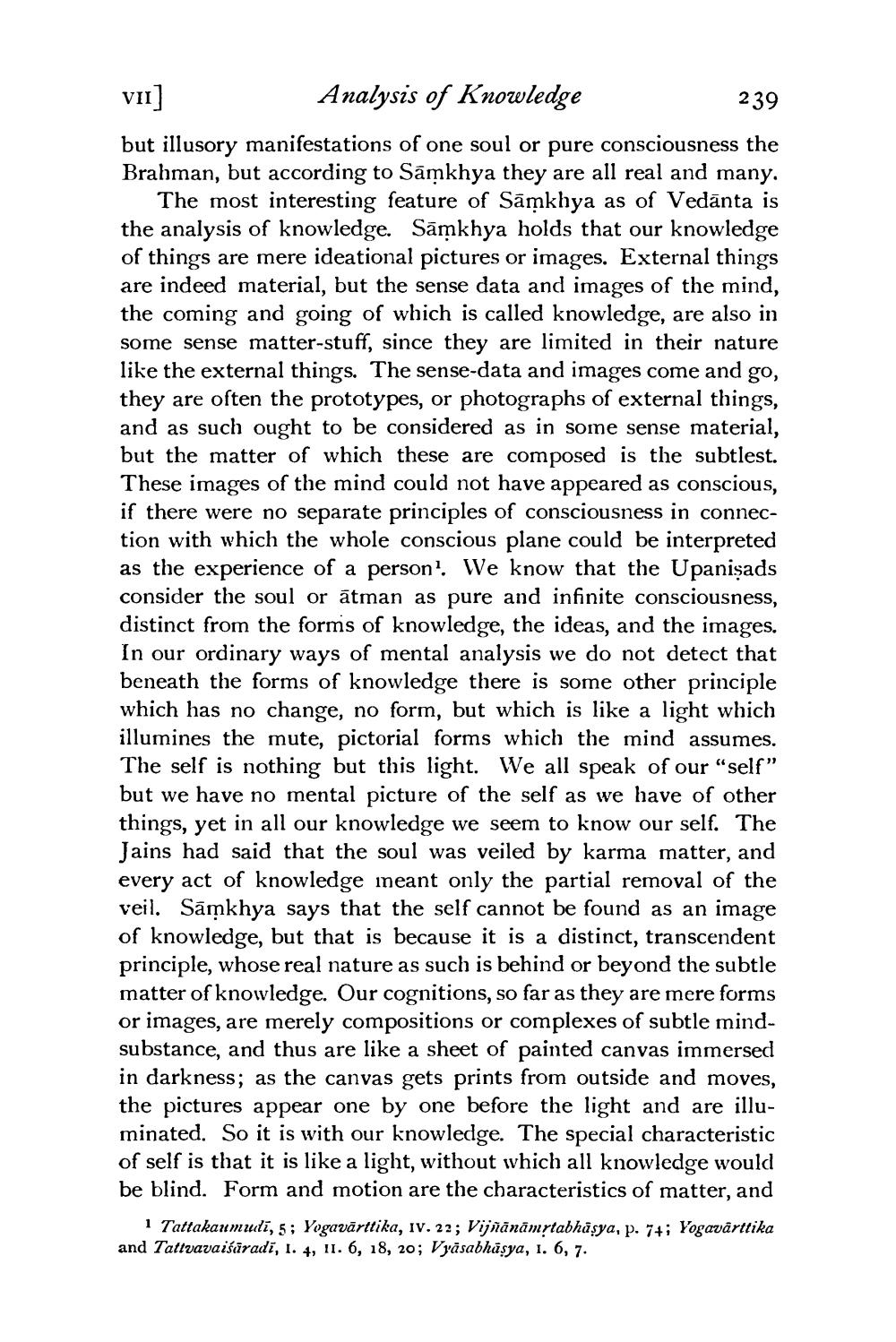________________
VII]
Analysis of Knowledge
239
but illusory manifestations of one soul or pure consciousness the Brahman, but according to Samkhya they are all real and many.
The most interesting feature of Samkhya as of Vedanta is the analysis of knowledge. Samkhya holds that our knowledge of things are mere ideational pictures or images. External things are indeed material, but the sense data and images of the mind, the coming and going of which is called knowledge, are also in some sense matter-stuff, since they are limited in their nature like the external things. The sense-data and images come and go, they are often the prototypes, or photographs of external things, and as such ought to be considered as in some sense material, but the matter of which these are composed is the subtlest. These images of the mind could not have appeared as conscious, if there were no separate principles of consciousness in connection with which the whole conscious plane could be interpreted as the experience of a person'. We know that the Upanisads consider the soul or ātman as pure and infinite consciousness, distinct from the forms of knowledge, the ideas, and the images. In our ordinary ways of mental analysis we do not detect that beneath the forms of knowledge there is some other principle which has no change, no form, but which is like a light which illumines the mute, pictorial forms which the mind assumes. The self is nothing but this light. We all speak of our "self" but we have no mental picture of the self as we have of other things, yet in all our knowledge we seem to know our self. The Jains had said that the soul was veiled by karma matter, and every act of knowledge meant only the partial removal of the veil. Samkhya says that the self cannot be found as an image of knowledge, but that is because it is a distinct, transcendent principle, whose real nature as such is behind or beyond the subtle matter of knowledge. Our cognitions, so far as they are mere forms or images, are merely compositions or complexes of subtle mindsubstance, and thus are like a sheet of painted canvas immersed in darkness; as the canvas gets prints from outside and moves, the pictures appear one by one before the light and are illuminated. So it is with our knowledge. The special characteristic of self is that it is like a light, without which all knowledge would be blind. Form and motion are the characteristics of matter, and
1 Tattakaumudi, 5; Yogavārttika, IV. 22; Vijñānāmṛtabhāṣya, p. 74; Yogavärttika and Tattvavaisaradi, 1. 4, 11. 6, 18, 20; Vyasabhāṣya, 1. 6, 7.




